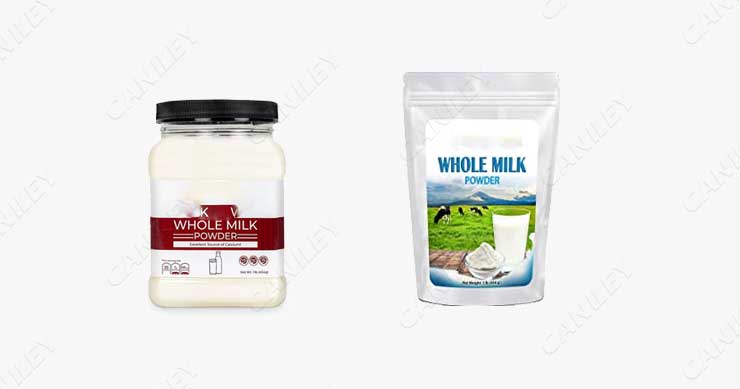Milk powder is a widely consumed product. As with any food product, the packaging of milk powder is a crucial aspect of its distribution and sale. But how is milk powder packaged? There are two most common packaging options: bag packing and tin packing.
The process of milk powder packaging
Milk powder packaging is typically done using specialized packing machines that are designed specifically for the task. These machines are capable of handling large quantities of milk powder and packaging them quickly and efficiently. The process usually begins with the milk powder being fed into the machine through a hopper. From there, the machine weighs out the correct amount of powder and dispenses it into the packaging material.
Once the milk powder has been dispensed, the packaging material is then sealed and labeled. Depending on the type of packaging used, the machine may also add other features such as tear notches, resealable zippers, or easy-open tabs. After the packaging process is complete, the finished products are usually inspected and tested for quality control purposes before being sent for distribution and sale.

Bag packing
Bag packing is one of the most common methods of milk powder packaging. It involves dispensing the milk powder into a pre-made bag, which is then sealed by the packing machine. The bags are typically made of high-quality materials such as laminated films or foil, which helps to preserve the freshness and flavor of the milk powder while also protecting it from moisture, light, and other external factors.
One of the main advantages of bag packing is that it is a relatively inexpensive and efficient method of packaging. The bags are lightweight and can be easily stacked and transported, which makes them ideal for large-scale distribution. They are also available in a wide variety of sizes and shapes, which makes them suitable for a range of different applications and uses.
Tin Packing
Tin packing is another popular method of milk powder packaging. It involves dispensing the milk powder into a tin, which is then sealed and print date by the packing machine. The tins are typically made of high-quality metal or aluminum, which provides an airtight seal that helps to preserve the freshness and flavor of the milk powder.
One of the main advantages of tin packing is that it provides a more durable and long-lasting form of packaging. Tins are resistant to damage from moisture, light, and other external factors, which helps to ensure that the milk powder remains fresh and flavorful for longer periods of time. They are also ideal for products that require a longer shelf life, such as those that are intended for long-term storage or export.
Of course, there are other packaging methods for milk powder, if you want to get more information, contact us: info@cankeytech.com
